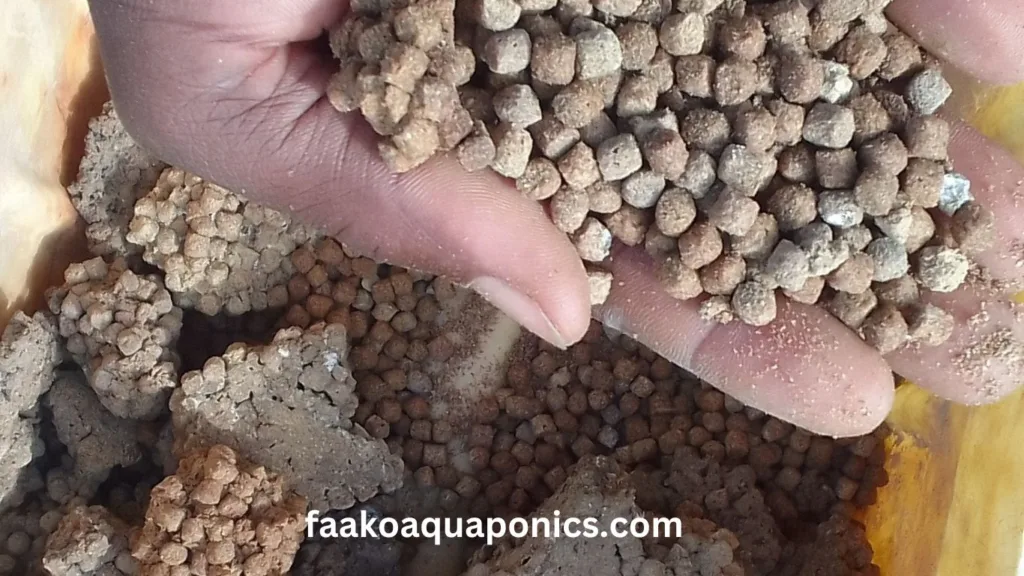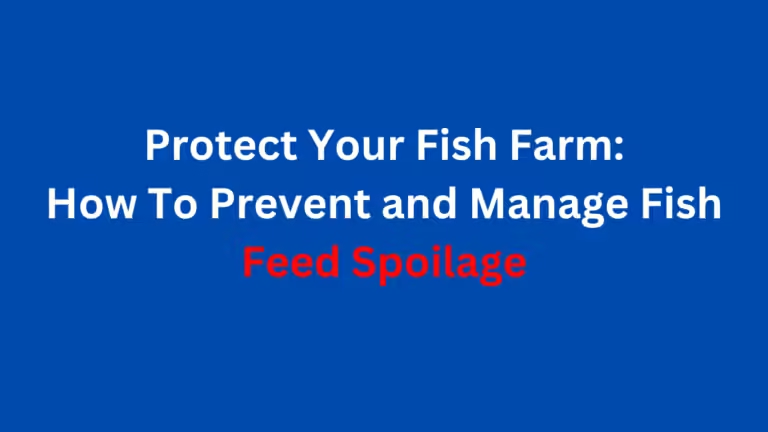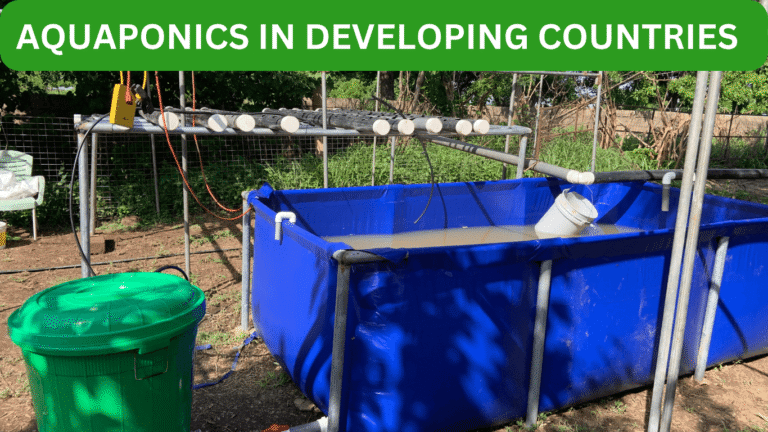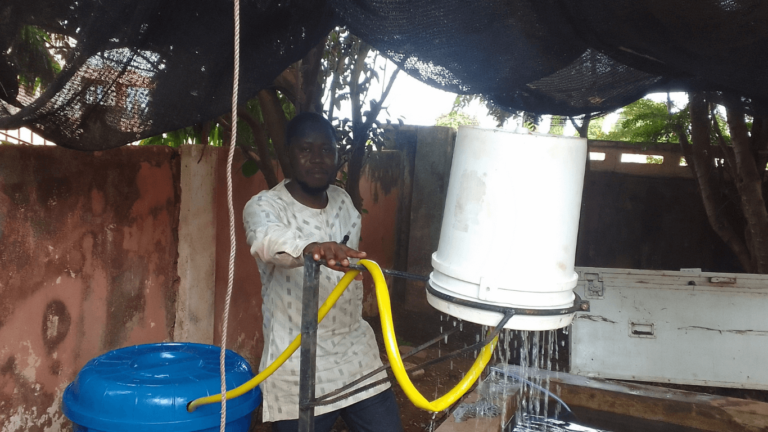How to prevent and manage fish feed spoilage is one of the biggest hurdles in managing feed costs while ensuring high-quality nutrition for fish.
In this post, we’ll explore how to prevent fish feed from spoiling, common mistakes in feed storage, and the costly effects of using spoiled feed.
By the end of this guide, you’ll be well-equipped on how to prevent and manage fish feed spoilage.
Why Proper Feed Storage Matters in Fish Farming
Fish feed is often the largest expense for a fish farm, representing up to 80% of production costs. Due to frequent price increases, many farmers buy feed in bulk to save on expenses and avoid potential supply shortages.
However, improper storage can lead to spoilage, and spoiled feed poses serious risks to fish health and pond water quality. For these reasons, it’s essential to know how to prevent and manage fish feed spoilage in order to maximize production and minimize cost of feed.
Our Experience: Learning the Hard Way
When we began our fish farming journey, we calculated the amount of feed needed from stocking fingerlings to harvesting mature fish—a cycle lasting approximately six months.
We purchased enough feed to last the entire cycle and stored it all at once. Unfortunately, due to improper storage practices, a significant portion of our feed spoiled, and we had to discard it.
Understanding the Causes of Fish Feed Spoilage
Feed spoilage occurs for several reasons, often due to environmental factors and improper handling. Let’s dive into the most common causes of spoilage in fish feed:
1. Lack of Ventilation
– Fish feed needs airflow to stay fresh. Storing feed in airtight conditions or covering it too tightly can cause mold and a stale odor.
When we stored our feed, we made the mistake of covering it with rubber sheeting, blocking airflow and promoting spoilage.
2. High Temperatures
– Heat accelerates spoilage, especially if feed is stored in a hot or poorly ventilated room.
High temperatures can cause feed to break down and lose essential nutrients. Ensure your storage area stays cool to preserve feed quality.
3. Moisture Exposure
– Moisture is one of the leading causes of feed spoilage. If feed bags are stored on the floor or in a damp area, they can absorb moisture, leading to mold and bacterial growth. Always store feed off the ground on pallets and in a dry environment.
4. Poor Packaging
– Inadequate or damaged packaging can allow moisture or pests to enter. When buying feed, check for tightly sealed bags without holes, tears, or weak spots.

5. Incomplete Drying During Production
– If the feed was not sufficiently dried before packaging, it may spoil faster once stored. This depends on the feed manufacturer’s processes, so buying from reputable suppliers is key.
Practical Tips to Prevent Feed Spoilage
Now that you know the causes of spoilage, here are some practical steps to prevent it and ensure your feed lasts throughout the farming cycle:
1. Check Expiration Dates and Storage Instructions
– Most commercial fish feed expires within six months. Check the expiration date before purchase and follow any specific storage recommendations provided by the manufacturer.
2. Buy Feed from Trusted Sources
– Purchase feed from reliable suppliers known for quality. Reputable sources typically have better handling and storage practices, reducing the likelihood of spoilage.
3. Store Feed in a Cool, Dry Place
– Avoid direct sunlight and areas prone to temperature fluctuations. Ideally, feed should be kept in a cool, shaded area with good ventilation.
4. Elevate Feed Bags Off the Ground
– Use wooden pallets or shelving to keep feed bags off the floor, protecting them from moisture and pests.
5. Allow Air Circulation
– Avoid covering feed bags with materials like plastic or rubber, which trap heat and humidity. A breathable cover, such as a cloth, allows for air circulation and reduces the risk of spoilage.
Why We Bought Feed in Bulk: Benefits and Risks
When we decided to buy feed in bulk, our goal was to save on costs and avoid the risk of running out of feed mid-cycle.
Price fluctuations in the fish feed market can be steep, with prices often increasing significantly within a single season. Bulk purchasing can protect farmers from these hikes, making it a practical choice if done correctly.
However, bulk buying does come with risks if the feed is not stored properly. Without proper storage, bulk feed can quickly spoil, leading to unexpected losses that outweigh the initial savings.
Dangers of Using Spoiled Feed in Fish Farming
Spoiled feed is not just unappetizing to fish—it can cause serious health problems and affect water quality in the pond. Here’s a breakdown of the negative impacts of feeding fish with spoiled feed:
1. Poor Appetite and Reduced Growth
– Fish may initially rush to eat, but they quickly recognize spoiled feed and lose interest, resulting in wasted feed and inadequate nutrition.
2. Nutrient Loss
– Spoiled feed loses essential nutrients, including proteins, vitamins, and minerals. Without these nutrients, fish growth slows, affecting overall productivity and profitability.
3. Digestive Issues and Disease
– Fish that consume spoiled feed are more susceptible to digestive problems, stress, and diseases. This leads to a higher mortality rate, particularly among young or weaker fish.
4. Increased Pond Contamination
– Spoiled feed that remains uneaten in the pond will dissolve, raising ammonia and nitrogen levels and depleting oxygen. This creates a stressful environment for fish and can lead to poor water quality and disease outbreaks.
How to Safely Discard Spoiled Feed
If you find spoiled feed in your storage, do not use it in the pond. Dispose of it safely away from your farm environment, as mold and contaminants in spoiled feed can be harmful not only to fish but also to the surrounding ecosystem.
Managing Fish Feed Costs: Key Takeaways
Feed management is crucial for a profitable fish farm. By investing in proper storage, selecting quality feed, and avoiding spoilage, you can significantly reduce feed costs and enhance your farm’s productivity. Here’s a quick recap of the key points to keep in mind:
– Buy Feed in Bulk Only When Necessary: Bulk purchases make sense only if you have appropriate storage facilities.
– Focus on Storage Quality: A small investment in ventilation, pallets, and a cool environment will save on long-term costs.
– Inspect Feed Regularly: Check for signs of spoilage, such as a change in color, odor, or texture.
Final Thoughts: Learning from Experience
Our own experience with feed spoilage was a hard lesson, but it taught us invaluable insights into fish farming best practices.
By sharing these insights, we hope to help fellow fish farmers learn how to prevent and manage fish feed spoilage. This will ultimately contribute to a healthier and more productive fish farming industry.
As the saying goes, “When one frog falls into a pit, others behind take caution.” We encourage you to apply these lessons, protect your fish feed, and ensure a thriving fish farm.
For more insights and tips, subscribe to our YouTube channel, Faako Aquaponics, where we share practical fish farming experiences and advice.




